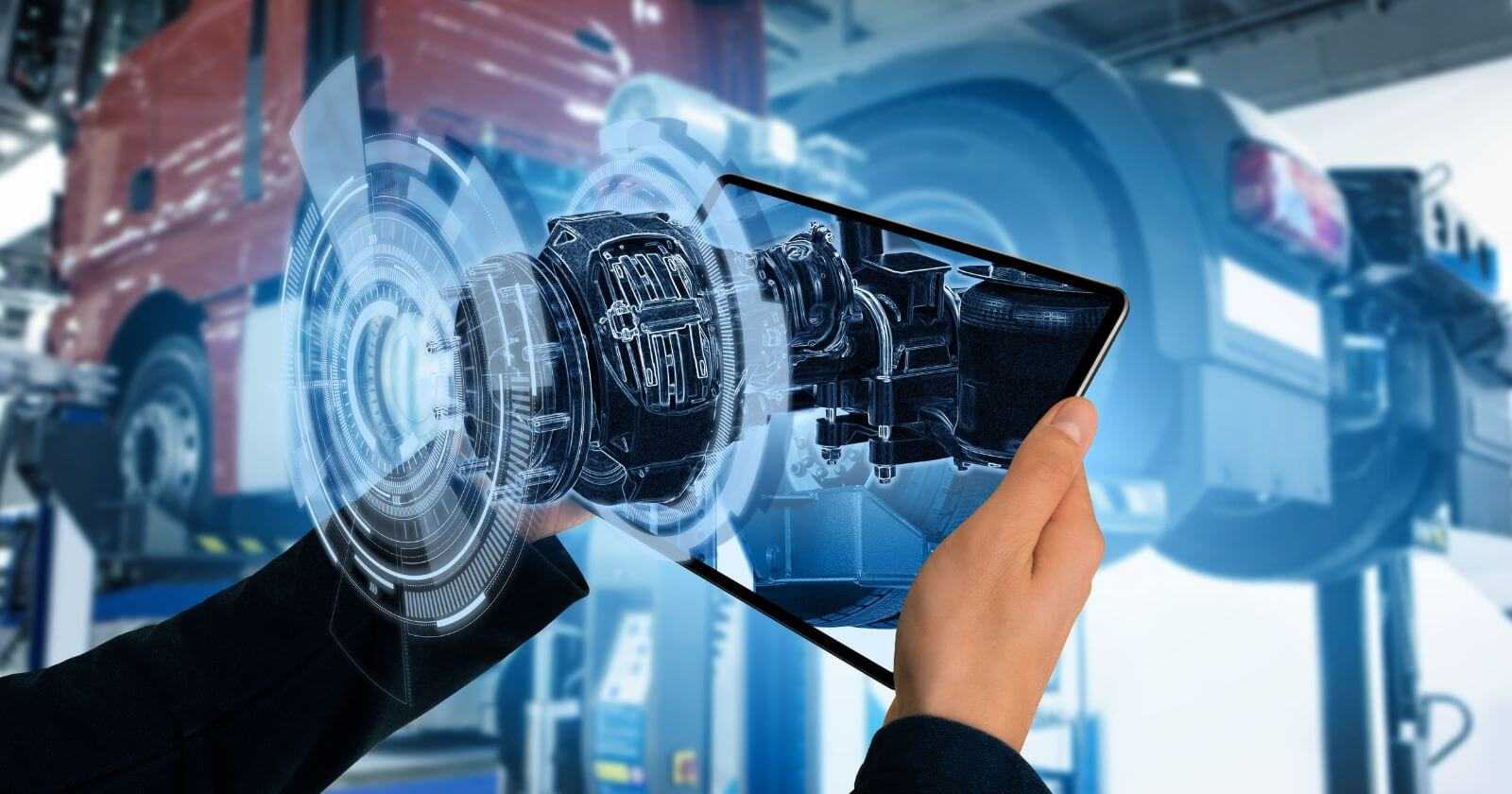It’s no secret that automotive industry trends for 2024 are the driving force behind the car industry’s growth and innovation. Like a car on the road, automotive companies must constantly accelerate and adapt for an incredible driving journey.
Being innovative can pay off handsomely in this competitive environment. As an example, consider the case of Ford’s Mustang. By recognizing and embracing the ‘muscle car’ trend, Ford still maintains its position among the world’s top-selling sports cars.
Automotive Market Overview
The automotive industry has had some tough times lately. The COVID-19 pandemic, unstable political climate, and a shortage of semiconductors. All of that have disrupted both demand and production.
However, despite the downturn, there is some good news to share. While car sales had dropped during the pandemic, they’ve started to pick up again. In 2022, global automobile sales surged to a record-breaking 66.7 million units, signifying progress in the industry.
As we move forward, let’s consider the key point on the automotive industry forecast for 2023:
- The number of new vehicles sold worldwide will not increase or decrease notably in 2023. Instead, recent car sales are predicted to increase by 0.9%, but new commercial vehicle sales are expected to drop by 1.3%.
- Electric vehicles (EVs) will be the only sector having growth in sales in 2023, with a projected rise of 25%. However, governments may make changes to their incentive programs for EVs.
- The automotive industry will continue to face challenges from global factors, such as the energy crisis in 2023.
- Autonomous vehicles will advance when UN regulators remove the speed limit.
Looking ahead, automotive companies will increasingly turn to technology solutions to grow their businesses and increase revenue. Pedro Pacheco, senior research director at Gartner, shares his outlook on the automotive industry.
“As digital technology becomes the differentiator in the car, the software will become automakers’ main profitability growth driver.”
- By 2023, half of the most prominent car companies will let buyers upgrade their cars even after buying them. They can get these upgrades through software updates, which you can purchase later.
- By the year 2028, most of the cars that people buy will use the Android Automotive operating system. Right now, only a minimal number of vehicles use this system.
- By 2025, half of the top 10 car makers will create their computer chips. They will keep partnerships with chip companies further. They will stop using “just-in-time” inventory management practices.
- In 2030, there will be four times more self-driving taxi robots worldwide. This number will exceed the total number of regular taxis available in 2022. Furthermore, these self-driving taxis will be very advanced and can drive themselves without a human driver.
The automotive industry has witnessed significant shifts in consumer behavior in recent years.
- 87% of electric vehicle buyers and 73% of internal combustion engine (ICE) ones are ready to buy cars online.
- Before engaging with dealers, car buyers increasingly educate themselves through online research. This has led to twice as many buyers beginning their car research online instead of at a dealership.
- 76% of those who want to buy a vehicle carry out thorough online searches before finalizing their purchase.
- More than 70% of auto shoppers report that online video content helps them find details about the cars.
- Consumers turn to multiple websites to gather information and compare car shopping options. On average, they visit 4.2 different sites and may use several devices.
The statistics above show that automotive companies must keep up with changing consumer behavior to stay competitive. Consumers are increasingly turning to technology, and companies can benefit from creating technology solutions based on the latest automotive market trends.
What Are the Current Automotive Industry Trends?
Electric cars, enhanced vehicle connectivity, and complex automotive ecosystems are just some key drivers of automotive industry trends.
However, many other exciting trends will shape the automotive industry in 2024.
Digital Customer Experience
The way consumers interact with the automotive industry is changing. There is a growing consumer trend towards a personalized and digital experience.
Many car buyers aged 45 and younger prefer sales and services that do not require physical contact. Around 60% of them show interest in buying their next car online. This suggests that traditional car showroom visits are becoming less attractive to this age group of consumers.
So the technology solutions behind customer experience trends in the automotive industry include the following.
- Customized Vehicles with WebGL
Customized Vehicles with WebGL is an emerging technology that can help automotive companies deliver personalized customer experiences. With the help of 3D modeling, this technology goes beyond creating just visually appealing car exteriors. Before production, automotive companies can utilize WebGL to design various components, such as custom car accessories. In addition, WebGL 3D graphics enable online customization of interior car designs and general prototyping.
Read also: Interactive 2D/3D Graphics for Web Projects
Discover WebGL capabilities your business can benefit from
- 3D Web Applications
The use of 3D web applications is another consumer trend in the automotive industry for 2024 that enriches the customer experience. With more consumers spending time online, providing an immersive experience – beyond traditional 2D graphics has become essential.
Unity, Play Canvas, and PixiJS are some of the tools that allow companies to create 3D graphics. This way, develop websites that resemble a virtual world. Meanwhile, 3D web apps can boost sales with interactive experiences and create excellent marketing materials for automotive products.
Adopting 3D web applications gives automotive businesses a competitive edge, boosting customer satisfaction, revenue, and long-term success.
- Community Platforms
A vital automotive trend for companies to build stronger relationships with their customers is community applications. These platforms offer a space where customers can engage with one another and the brand. Thereby providing valuable insights for businesses to understand their customers’ needs and preferences better.
Community platforms provide automotive companies with a variety of advantages. Namely, the ability to gather valuable customer feedback, cultivate brand loyalty, offer exclusive content and promotions, and improve customer support.
The BMW platform is an excellent example of a community application in the automotive industry. This app offers a range of features, including sharing experiences, receiving personalized offers, and accessing customer support resources.
- Digital Buying in Metaverse
Virtual showrooms created with metaverse technology give customers a fun and interactive way to shop for cars. With virtual test drives and the ability to customize features, customers get a unique shopping experience that’s both enjoyable and convenient.
Industry experts have found that using metaverse solutions has helped car companies reach more customers. It also increased sales, built brand loyalty, and allowed them to save money on showroom and inventory expenses.
Some car manufacturers, like Acura, have created virtual worlds where customers can engage with the brand. For example, Acura’s virtual showroom in Decentraland. It showcases its 2023 Integra model, giving customers a sneak peek at the car in a digital space.
Read more: What Is Metaverse and How Businesses Can Benefit From It
Find out metaverse capacities and embrace virtual world solutions
Enhanced Vehicle Connectivity
Enhanced Vehicle Connectivity (VC) is an exciting trend in the automotive industry. It requires integrating technology into vehicles, allowing them to establish communication channels with drivers and the external environment.
VC technology enables live data exchange and provides drivers with enhanced safety features. Some are collision warnings, lane departure alerts, and blind spot detection. Additionally, VC offers convenient features like voice-activated controls, music streaming, and GPS navigation.
Technology solutions powering vehicle connectivity trends include the following.
- User Applications
A user application designed for an automotive company is a software program offering various features related to the user’s vehicle. For example, running vehicle diagnostics, remote start and stop capabilities, navigation, parking assistance, safety features, and entertainment options.
Tesla is a prime example of an automotive company successfully integrating such features into its vehicles. Tesla owners can manage and keep track of their cars through a mobile application. The app allows them to secure or open their cars and even command their vehicles to move toward their desired location.
- Advanced Driver Assistance Systems
ADAS, or Advanced Driver Assistance Systems, is a collection of technologies intended to enhance driver comfort and safety. One of the ADAS solutions is lane keeping which uses cameras or sensors to identify lane departure.
Another ADAS solution is automatic braking, which detects potential collisions and applies the brakes to reduce the impact’s severity. Adaptive cruise control is the third ADAS solution. It adjusts a car’s speed based on the distance to other vehicles to reduce the risk of rear-end accidents.
One business that has truly embraced this technology is Volvo. They implemented top-of-the-line safety features in their vehicles, such as the Volvo XC90. It has made a vehicle a top choice for families prioritizing safety and reliability.
Advanced Supply Chain
Advanced supply chains are an innovative approach to logistics and operations management. It allows businesses to speed up lead times, reduce inventory costs, and improve delivery times. The answer to how the supply chain does this is explained below, so move on!
So technology solutions driving automotive supply chain trends are as follows.
- Analytics Platform
Analytics platforms analyze big data more efficiently using powerful tools like regression analysis, stochastic modeling, and optimization. As a result, automotive companies could combine different data types to get insights to help them make better decisions.
Many companies in the industry have implemented analytics platforms to improve their operations. For example, General Motors uses an analytics platform. The web-based platform gives GM real-time visibility into supplier performance and identifies potential issues before they become problems.
- Data Visualization
Data visualization (DV) is a valuable tool for automotive companies to gain insights into their supply chain operations. It allows them to identify areas that require improvement and increase efficiency. DV involves displaying complex data sets using visual graphics.
Automakers can use data visualization to keep track of inventory levels and monitor supplier performance. Thereby optimizing logistics routes, predicting demand, analyzing quality control data, and discovering possibilities to reduce costs.
To illustrate, Ford Motor Company employs dashboards and visual analytics tools to monitor supplier performance and detect potential disruptions.
Automotive Complex Ecosystems
The automotive ecosystem includes all the parts of the car industry, from designing and manufacturing cars to selling and maintaining them. Recently, this ecosystem has expanded to include new technologies and business models, such as electric cars and ride-sharing services.
Let’s examine the technology solutions related to the automotive ecosystem trends.
- Electric Vehicles Ecosystem
Due to environmental concerns, EVs are popular in the auto industry. The revenue in this sector is expected to reach US $623.3 billion in 2024. Automakers are expanding their EV lineups to keep up with this growing trend. Governments worldwide offer incentives to encourage electric vehicle adoption.
This growth has created an ecosystem that includes vehicles and the necessary charging infrastructure, renewable energy sources, battery intelligence software, and battery recycling programs. The shift towards electric cars is not just a fad. It’s a significant and long-lasting transformation towards a more sustainable future.
- Mobility as a Service
Maas is a cutting-edge transportation concept that integrates multiple modes of transportation services into a single platform. This ecosystem comprises technology platforms that enable effortless and smooth integration of services. For instance, ride-hailing, public transit, car-sharing, and bike-sharing.
The technology platforms in Maas consist of various advanced components, including payment systems, trip-planning algorithms, and data analytics. The payment systems provide a streamlined payment method for multiple transportation services. The trip-planning algorithms employ real-time data to suggest the most suitable transportation option for the users. Furthermore, data analytics help how people use transportation services and improve them to make them more convenient.
- Enterprise-Based Metaverse
The trend in the automotive industry is to use virtual worlds for business purposes. This is why the concept of an enterprise metaverse is gaining popularity. This allows companies to display their latest technologies and products virtually, reducing the costs associated with physical events and exhibitions.
Businesses can use an enterprise-based metaverse in a variety of ways. For instance, hosting virtual events and exhibitions to showcase their products and services, creating virtual showrooms for customers to explore their latest products and technologies, or providing employees immersive collaboration and training opportunities.
Additionally, companies might offer virtual customer support and hold virtual product launches to create excitement around new vehicles.
Stable Network Infrastructure
Just like a car engine needs a solid foundation, maintaining a stable network infrastructure requires a comprehensive tech approach. Such infrastructure must be powered by reliable technologies – 5G networks, edge computing, and artificial intelligence. Thus ensuring the safety and efficiency of the vehicles.
With a stable network infrastructure, the potential of different automotive trends can be fully realized – for example, connected and autonomous vehicles. Therefore, automotive companies must prioritize developing and implementing stable network infrastructure to provide a seamless experience for drivers and passengers alike.
Let’s look at the technologies driving the automotive industry’s network infrastructure and cybersecurity trends.
- 5G and Edge Computing
The advent of 5G technology is revolutionizing the automotive industry, providing it with faster and more dependable connectivity. This cutting-edge technology offers three primary advantages for cars. They include enhanced and consistent user experiences, improved connectivity for multiple devices, and rapid and reliable communication with low latency.
These advantages will improve in-car entertainment, self-driving car monitoring, and even automated systems for aerospace and robotics. Furthermore, 5G could reduce latency so much that edge computing could handle some critical safety tasks instead of onboard systems.
- Automotive Cybersecurity
Cybersecurity has become very important in the automotive industry as technology is increasingly used in vehicles. Employees will need new skills and work methods to ensure the hardware and software are safe and secure. This includes specification, design, development, integration, and testing.
Industry players are using various strategies. Some are focusing on vertical integration. Others offer specialized cybersecurity consulting services or introduce innovative solutions like threat-detection applications or vehicle security operations centers.
Read also: Security Testing or Top 10 Software Vulnerabilities
How software can be checked for vulnerability to various attacks
Incorporated AI Features
Artificial intelligence has become increasingly popular this year, with its use expanding across various industries. For example, the use of AI in the automotive sector is diverse. Ranging from driver assistance systems to predictive maintenance and manufacturing optimization. By leveraging AI, you can significantly enhance the company’s performance, improving safety, increasing efficiency, and boosting profits.
The technology solutions behind AI trends in the automotive industry go as follows.
- Autonomous Driving and Driver Assist
Autonomous driving and driver assist technology is a game-changer in the automotive industry. It provides drivers with a more comfortable and safer driving experience. AI algorithms and sensors work together to detect objects on the road, navigate traffic, and make quick decisions. Thus reducing accidents and increasing overall efficiency.
This technology has also enabled new business models. For example, ride-sharing and autonomous delivery vehicles that offer new opportunities for businesses and customers.
- Predictive Maintenance
Predictive maintenance technology utilizes AI and machine learning algorithms to predict when a vehicle requires maintenance. This allows for timely repairs before significant issues arise. The technology can also analyze large amounts of data to identify patterns and provide insights into vehicle performance. This way, it enables manufacturers to improve their products and reduce costs.
Predictive maintenance minimizes vehicle downtime and optimizes maintenance costs, resulting in better vehicle performance and reduced operating expenses.
- Design and Manufacturing
AI can play a crucial role in designing new vehicle models in enhancing their performance, safety, and fuel efficiency. Rather than relying solely on human intuition, AI can analyze data from previous designs and generate more effective strategies.
AI can analyze production data during smart manufacturing to identify areas where efficiency can be improved. For example, BMW is leveraging AI to optimize its vehicle assembly line. By detecting bottlenecks in the manufacturing process, AI helps the company streamline workflow.
Final Words
The automotive sector is experiencing significant transformations caused by shifting consumer preferences and the current economic situation. Therefore, Automakers must follow automotive industry trends and investigate their drivers to survive and succeed.
This will enable them to identify technology solutions that can help to adapt to customer needs. It will also enhance brand equity despite the uncertain political and economic environment.
Looking to enhance your automotive business with technology solutions? Contact our experts!





